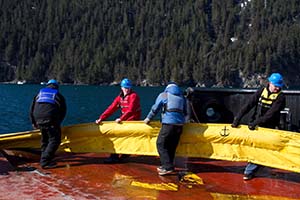How has oil transportation changed in Prince William Sound?
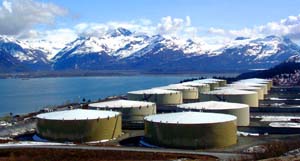 Although the immediate cause of the spill was a navigational error on the part of the tanker’s captain and crew, complacency among the oil industry, regulatory agencies, and the public was found to play a part in the disaster.
Although the immediate cause of the spill was a navigational error on the part of the tanker’s captain and crew, complacency among the oil industry, regulatory agencies, and the public was found to play a part in the disaster.
Few prevention measures were in place and cleanup resources were inadequate.
Since 1989, regulatory agencies, the industry and citizens have been working together to learn lessons on how we can prevent oil spills and be better prepared to clean up if another spill should occur.
What has improved in oil spill prevention since the Exxon Valdez oil spill?
Double hulls
All tankers transporting oil through Prince William Sound are now double-hulled. Double hulls, basically two steel skins separated by several feet of space, are an effective design feature which can reduce or eliminate spills that result from groundings or collisions.
Risks from human error
All tanker captains, and any crew member suspected of consuming alcohol, are now subject to alcohol tests before sailing. Crews now receive more training and work hours are limited to reduce accidents caused by fatigue.
In addition, the two escort tugs mean extra trained crew members are watching and can notify the tanker crew if they are off course.
Monitoring marine traffic
The Coast Guard now monitors the speed and heading of all tankers and other vessels in Prince William Sound through improved radar and the Automatic Identification System. Vessels equipped with this system send real-time information about their locations and movements to the Coast Guard’s Vessel Traffic System offices in Valdez, as well as council offices.
Ice detection
The Exxon Valdez left the tanker lanes because of reports of ice drifting into the tanker lanes from nearby Columbia Glacier. One of many improvements to help avoid such problems includes the council-led collaborative effort between the Coast Guard, the oil industry, regulatory agencies, the council, and several other organizations, led to the installation of an ice-detecting radar system on Bligh Island, near Bligh Reef. The Coast Guard and Alyeska’s Ship Escort/Response Vessel System, known as SERVS, receive information from the strategically located reef-island radar at their Valdez offices and can warn tanker captains when ice may pose a threat.
Tanker escorts
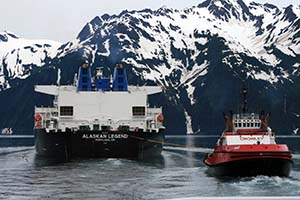
Powerful tugs escort all loaded tankers from the terminal at Valdez, through Prince William Sound and Hinchinbrook Entrance, and out into the Gulf of Alaska. These tugs are designed to keep a disabled tanker off the rocks or begin cleanup if there is a spill.
These escorts were originally only mandated for single hull tankers carrying oil. The Coast Guard Authorization Act of 2010, signed into law by President Obama, guaranteed this escort system will now continue for all double hulled tankers.
What has improved in oil spill response since the Exxon Valdez oil spill?
While prevention measures are the best way to avoid environmental damage from oil spills, even the best system cannot prevent all risks. Oil spill response in Prince William Sound has seen many improvements since 1989. Alyeska’s SERVS is now considered one of the best oil spill response forces in the world.
Contingency plans
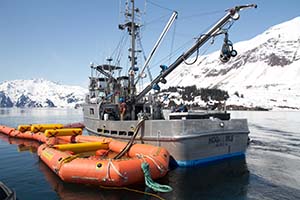
Contingency plans, extensive documents which contain details on the preventing and cleanup of oil spills, are required by state and federal law. The requirements in these plans have expanded since 1989, and must demonstrate that larger spills can be cleaned up and more spill response equipment is immediately available.
Some changes in the contingency plans since 1989 include:
- Local fishing vessels are an integral part of the response plans. They transport response equipment, deploy and tend boom. Alyeska provides training for these fishing boats and crews annually.
- More emphasis on shoreline protection and wildlife protection.
- Special strategies have been developed to protect specific areas that have been identified as a sensitive area or a critical resource, such as salmon streams or hatcheries.
Citizen oversight
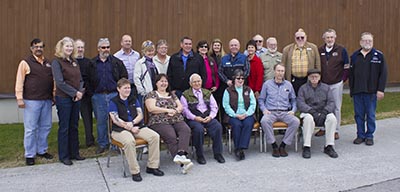
One of the most innovative changes was the establishment of permanent, industry-funded, independent citizen oversight. Citizens are now guaranteed a voice in safety planning and in oversight of the oil transportation industries in Prince William Sound and Cook Inlet. These councils maintain the constant vigilance needed to prevent a return of the complacency that allowed the Exxon Valdez spill to happen.
Spill response equipment
In 1989, there were only 13 oil-skimming systems in Alyeska’s response inventory; today, 108 units are available for oil spill response in the Sound.
Only 5 miles of oil spill boom were available in 1989; today, 49 miles of various types of boom are available.
Alyeska had only about 220,000 gallons of storage capacity for recovered oil and oily water immediately after the Exxon Valdez spill; today, on-water storage capacity is over 900,000 barrels of oil (almost 38 million gallons).
Spill drills
Before 1989, few oil spill drills were conducted in Prince William Sound. Today, two major exercises per year, along with several smaller drills, take place. The drills provide opportunities for response personnel to work with equipment and practice procedures.
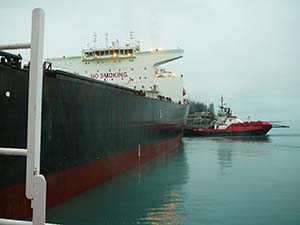
Improvements at the terminal since the Exxon Valdez oil spill
Air quality in Valdez
For the first twenty years of operations at the terminal, thousands of tons of toxic vapors were emitted annually during the tanker loading process. These harmful vapors were vented into the atmosphere, threatening the health of the terminal’s workers and Valdez residents.
In 1998, Alyeska installed vapor controls at two loading berths, which eliminated nearly all of the pollution from the tanker loading operations.
The Ballast Water Treatment Facility, the facility designed to clean oily residue from tanker ballast water before it is released back into the environment, has also seen improvements. A system has been installed to reduce the vapors released into the environment from the facility.
Concerns remain

Although there have been many improvements, there are still many areas of concern, meriting the continued attention and sustained efforts from the council. A few of these include:
- Aging infrastructure and reduced oil throughput bring new risks that must be understood and safely managed.
- Agencies and industry are increasingly relying on dispersants as a preferred oil spill response option. This reliance must be tempered with scientific knowledge and solid guidelines to ensure the environmental tradeoffs of such choices are well founded.
- Though prevention strategies and regulations are on the horizon, the potential for harmful invasive species to arrive in Prince William Sound in oil tanker ballast waters remains and response and detection options are needed.
- New federal and international ship air pollution and fuel quality regulations are now coming into force. These regulations will affect the oil tankers in Prince William Sound. These are expected to provide a dramatic reduction in sulphur dioxide emissions and overall coastal air pollution as the improvements are phased in.
